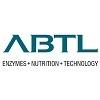Use of enzymes as prebiotics


Xylanases: saves costs , improves productivity and flock uniformity.??
1. Feed enzyme appli- cation in diets for poultry is also one of the most researched fields in poultry science today, with over 2 500 independ- ent enzyme trials conducted with broilers alone (Rosen, 2010).
2. Energy is usually the most expensive nutritional component of poultry diets. ?
a) Therefore, a higher efficiency in its utilisation will result in lower feed cost.
b) In the field of nutrition and food technology, the most significant aspects will be the use of enzymes, the evaluation of non-nutritional factors, which may maximise ingredient utilisation by the birds.
3. Feedstuffs should no longer be considered as commodities.
a) Qualitative and nutritional criteria should be used for their purchase and segregation in feed mills.
4. Enzymes will be increasingly used:
a) as they improve ingredient digestibility and nutrient absorption (Cowan et al., 1996),
b) as well as reduce the detrimental effects of anti-nutritional factors, thereby allowing higher flexibility in the use of feedstuffs as well as reducing feed costs (Ferket, 2009)
c) and pollutant excretion in animal waste (Penz-Jr and Bruno, 2010).
d) In addition enzymes lowers feed costs, this will also reduce nitrogen excretion in the environment (Nahm, 2002).??
5. Xylanase improves gut health in poultry and is a Energy Booster and has ability to improve digestibility of plant-based feed ingredients and to reduce digesta viscosity is well-accepted.
6. Xylanase appear to be partially related to their indirect impact on mucosal morphology of the small intestine of birds.
a) In the intestine, undigested NSPs, including arabinoxylans, stimulate the proliferation of pathogenic bacteria
b) Xylanase reduces nutrient availability for cecal pathogens
and it not only reduces digesta viscosity through the hydrolysis of soluble arabinoxylans in the small intestine;
7. This process can also improve gut health by generating xylo-oligosaccharides (XOS), which are fermented, particularly in the foregut.
a) These have a prebiotic effect that selectively stimulates the growth of beneficial gram-positive bacteria in the foregut .
b) This greater level of beneficial microbial activity and growth in turn boosts production of volatile fatty acids, which can then be absorbed and utilised by the animal as an energy source.
8. Xylanase reduces oxidative stress in the gut and It reduces mucin secretion. Mucin is an excellent nutrient source for some pathogenic bacteria such as E. coli and Clostridium perfringens.??
9. Xylanase significantly reduces wet litter.?
a) xylanases can reduce the adverse effects of anti-nutritional factors in feeds, facilitate the development of healthy gut microbiota, and maintain optimal gut function and integrity.??
10. Xylanase improves laying performance in layers , Breeders and boosts energy in Broilers.
a) Xylanase improves flock uniformity and also reduces the impact on feedstuff variability.
Dr V. Rajendra Prasad


Antibacterial activity of Bacillus species-derived surfactin on Brachyspira hyodysenteriae and Clostridium perfringens (Extract)








.jpg&w=3840&q=75)
.jpg&w=3840&q=75)

.jpg&w=3840&q=75)



